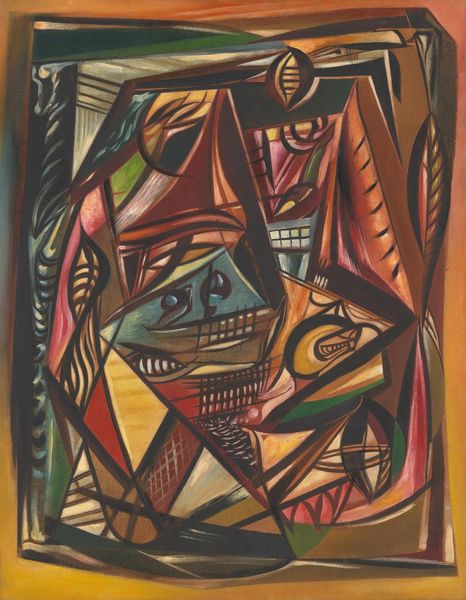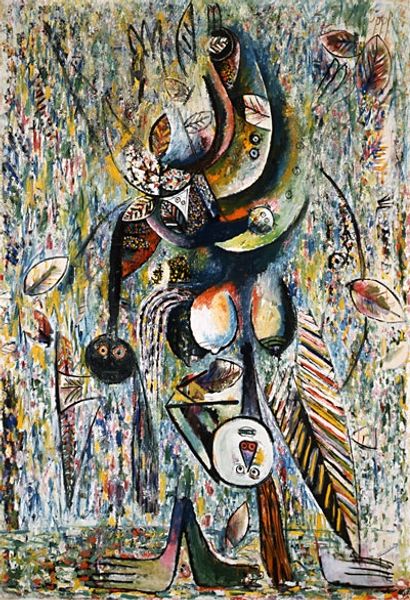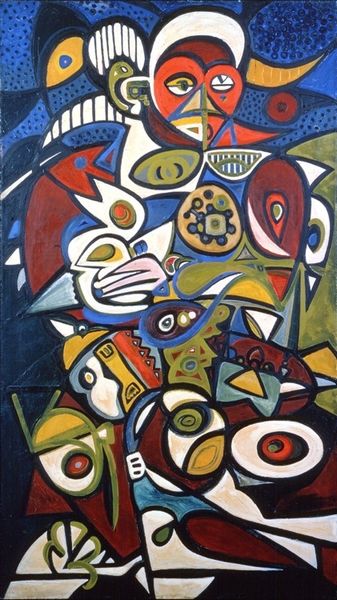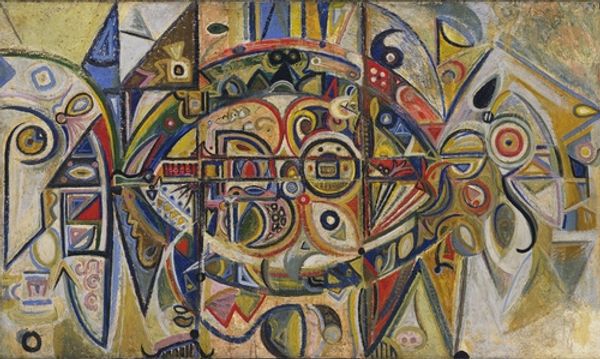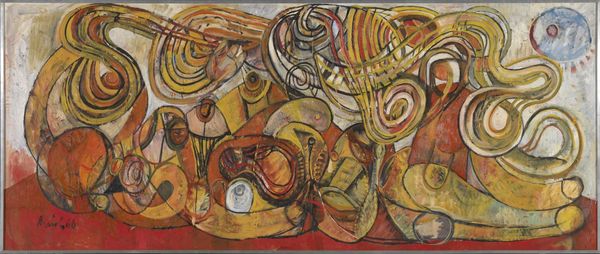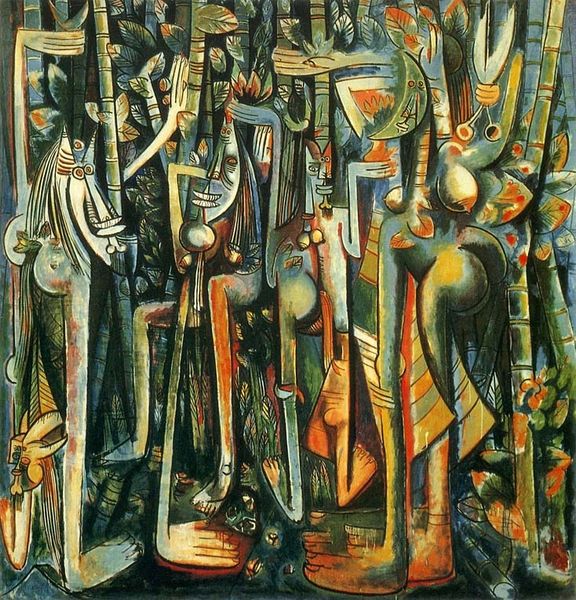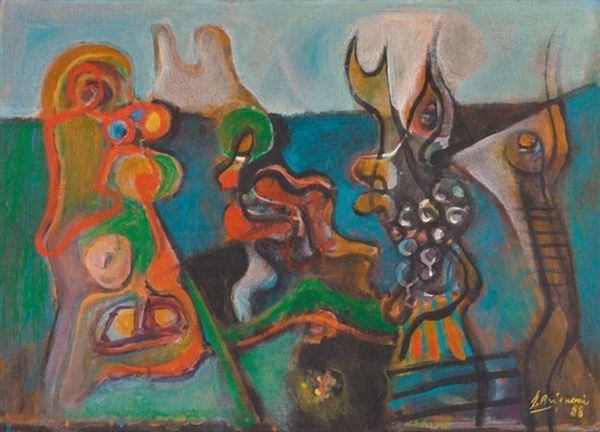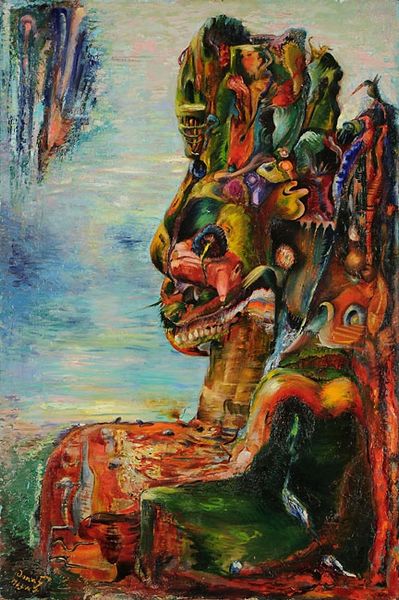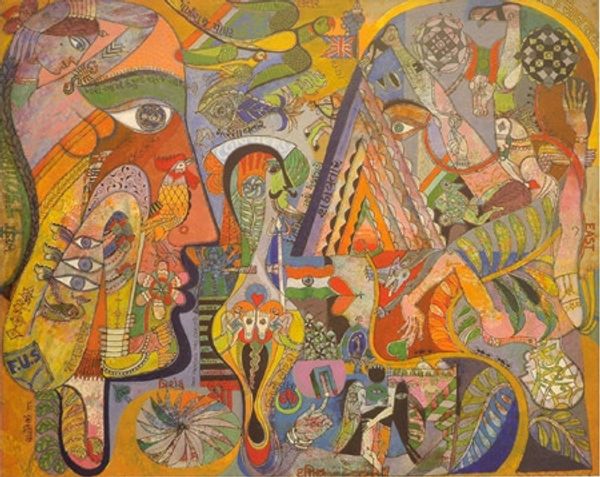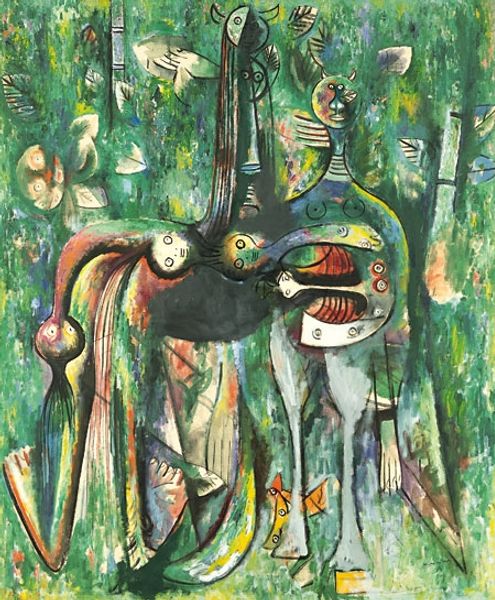
Copyright: Rene Portocarrero,Fair Use
Editor: Here we have Rene Portocarrero’s *Carnival Sorcerer* from 1945, done with acrylic paint. I find the color palette unexpectedly earthy given the "carnival" title; the overlapping geometric figures suggest some type of frenzied energy. What strikes you about this work? Curator: The "carnival" aspect can also be seen as commentary on social roles and cultural performances. Portocarrero, emerging from a period marked by strong socio-political currents in Cuba, seems to critique those figures in power. Notice the mask-like visages; how do you think they play into this? Editor: The masks seem to almost parody authority figures, undermining their power through chaotic and slightly grotesque depictions. Is the Cuban setting relevant to this depiction of figures? Curator: Absolutely. Cuba in the 1940s saw considerable political upheaval and societal shifts, influenced by its relationship with the United States and internal struggles for power. Portocarrero captures these societal tensions, filtering them through his abstract, expressive style. To whom does the painting appeal and for what reasons? Editor: I suppose its blend of folk imagery and modern abstraction would have made it approachable to a broad public, while still signaling the artist's sophisticated take on Cuban identity. And its carnival setting could reflect some of Cuba’s complex social realities and provide space for political messaging through the lens of cultural critique. Curator: Exactly! Its success lies in the synthesis. It acknowledges the socio-political while allowing space for artistic interpretation and appreciation across diverse audiences. This piece gives us a historical perspective of both folk culture and of class and identity during a time of political instability in Cuba. Editor: I never considered the art as commentary on Cuban culture and politics. Thank you for that insight!
Comments
No comments
Be the first to comment and join the conversation on the ultimate creative platform.

